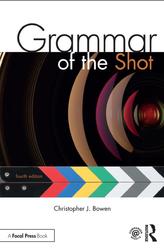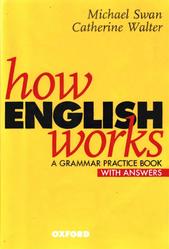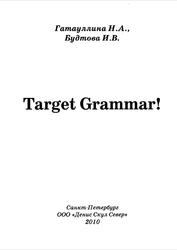The newly revised and updated fourth edition of Grammar of the Shot teaches readers the principles behind successful visual communication in motion media through shot composition, screen direction, depth cues, lighting, camera movement, and shooting for editing. Many general practices are suggested that should help to create rich, multilayered visuals. Designed as an easy-to-use guide, Grammar of the Shot presents each topic succinctly with clear photographs and diagrams illustrating key concepts, practical exercises, and quiz questions, and is a staple of any filmmaker's library.

Choosing Your Frame.
The visual needs of your motion picture project can be guided by the script of your fictional narrative story (discussed later in this chapter), or are dictated by real-time documentary events, or driven by the content, style, and purpose of the show that you are producing. Knowing how you want to visually present your story can lead you to some of your first decisions regarding your visual plan: what camera and what lens will you use? In simple terms, these components work together to create your pictures. The lens, traditionally, gathers, focuses, and controls the amount of light entering the camera body. The camera body houses the light-sensitive "imager" (digital light sensor, emulsion film, etc.) that forms and records the image that you ultimately watch on a screen.
These two very important tools, the camera (referenced throughout this book) and the lens (primarily discussed in Chapter Three), work in tandem to reproduce a particular horizontal rectangle of reality that is out in front of the camera's position. This rectangle is only a small segment or cut-out window of the total sphere of the physical world around the camera. This cut-out has a defined and finite area and we call it the frame (Figure 1.1).
Contents.
Introduction.
Acknowledgments.
Chapter One – The Shots: What, How, and Why?.
Chapter Two – The Basics of Composition.
Chapter Three – Composition: Beyond the Basics.
Chapter Four – Lighting Your Shots: Not Just What You See, but How You See It.
Chapter Five – Will It Cut? Shooting for Editing.
Chapter Six – Dynamic Shots: Subjects and Camera in Motion.
Chapter Seven – Working Practices.
Chapter Eight – Concluding Thoughts.
Appendix A – Helpful Resources for the New Filmmaker.
Appendix B – Crew Members Commonly Needed for Motion.
Picture Production.
Glossary.
Index.
Бесплатно скачать электронную книгу в удобном формате, смотреть и читать:
Скачать книгу Grammar of the Shot, Bowen C.J., 2018 - fileskachat.com, быстрое и бесплатное скачивание.
Скачать pdf
Ниже можно купить эту книгу, если она есть в продаже, и похожие книги по лучшей цене со скидкой с доставкой по всей России.Купить книги
Скачать - pdf - Яндекс.Диск.
Дата публикации:
Хештеги: #учебник по английскому языку :: #английский язык :: #Bowen
Смотрите также учебники, книги и учебные материалы:
Следующие учебники и книги:
 Grammar is Easy, Краткая грамматика-английского языка с упражнениями и ключом к ним, Пиквер А., 2001 — Грамматика сориентирована на практические нужды: материал представлен максимально сокращенно и системно. В конце каждого раздела - упражнения для закрепления, ключ … Книги по английскому языку
Grammar is Easy, Краткая грамматика-английского языка с упражнениями и ключом к ним, Пиквер А., 2001 — Грамматика сориентирована на практические нужды: материал представлен максимально сокращенно и системно. В конце каждого раздела - упражнения для закрепления, ключ … Книги по английскому языку Английские слова в картинках и упражнениях, Кирпиченкова Е.П., 1997 — Что нужно для того, чтобы научиться говорить на иностранном языке? В первую очередь, надо выучить много иностранных слов. В книге, … Книги по английскому языку
Английские слова в картинках и упражнениях, Кирпиченкова Е.П., 1997 — Что нужно для того, чтобы научиться говорить на иностранном языке? В первую очередь, надо выучить много иностранных слов. В книге, … Книги по английскому языку Excel for Kazakhstan, Grade 5, Student`s book, Evans V., Dooley J., Obee B., 2017 — Excel for Kazakhstan (Grade 5), Student s book, Evans V., Dooley J., Obee B., 2017. Excel for Kazakhstan is a … Книги по английскому языку
Excel for Kazakhstan, Grade 5, Student`s book, Evans V., Dooley J., Obee B., 2017 — Excel for Kazakhstan (Grade 5), Student s book, Evans V., Dooley J., Obee B., 2017. Excel for Kazakhstan is a … Книги по английскому языку How to Turn $100 nto $1 000 000, McKenna J., Glista J., Fontaine M., 2016 — Tis possible to be poor and happy, or rich and sad, but people who are financially independent have a lot … Книги по английскому языку
How to Turn $100 nto $1 000 000, McKenna J., Glista J., Fontaine M., 2016 — Tis possible to be poor and happy, or rich and sad, but people who are financially independent have a lot … Книги по английскому языку
Предыдущие статьи:
 How English Works, A grammar practice book, With answers, Swan M., Walter C., 2000 — How English Works makes grammar practice interesting. Rules are easy to understand and remember; exercises entertain as well as teach. … Книги по английскому языку
How English Works, A grammar practice book, With answers, Swan M., Walter C., 2000 — How English Works makes grammar practice interesting. Rules are easy to understand and remember; exercises entertain as well as teach. … Книги по английскому языку Easy Phonic Words — Based on the principles of synthetic phonics, this book supports the government s Letters and Sounds programme used in schools. Книги по английскому языку
Easy Phonic Words — Based on the principles of synthetic phonics, this book supports the government s Letters and Sounds programme used in schools. Книги по английскому языку Target Grammar, Гатауллина Н.А., Будтова И.В., 2010 — Данная книга является одновременно учебным пособием и справочником по грамматике английского языка. В ней представлена грамматика от уровня Beginner до … Книги по английскому языку
Target Grammar, Гатауллина Н.А., Будтова И.В., 2010 — Данная книга является одновременно учебным пособием и справочником по грамматике английского языка. В ней представлена грамматика от уровня Beginner до … Книги по английскому языку Все правила английского языка на ладони, Матвеев С.А., 2020 — Данное издание представляет собой удобный и компактный справочник по грамматике английского языка. Формат издания позволяет иметь пособие по грамматике всегда … Книги по английскому языку
Все правила английского языка на ладони, Матвеев С.А., 2020 — Данное издание представляет собой удобный и компактный справочник по грамматике английского языка. Формат издания позволяет иметь пособие по грамматике всегда … Книги по английскому языку




